Julia Pfeiffer Burns State Park
- January 23, 2024
- 0 comment
Explore Julia Pfeiffer Burns State Park, a haven of majestic redwoods, stunning McWay Falls, and rich history in California. Located along California’s scenic coastline, Julia Pfeiffer Burns State Park offers a stunning display of natural beauty, characterized by its famous McWay Falls, where water cascades elegantly into the Pacific Ocean. Named in honor of a notable Big Sur pioneer, this park is a testament to the blend of history and nature, featuring towering redwoods and a diverse range of wildlife.
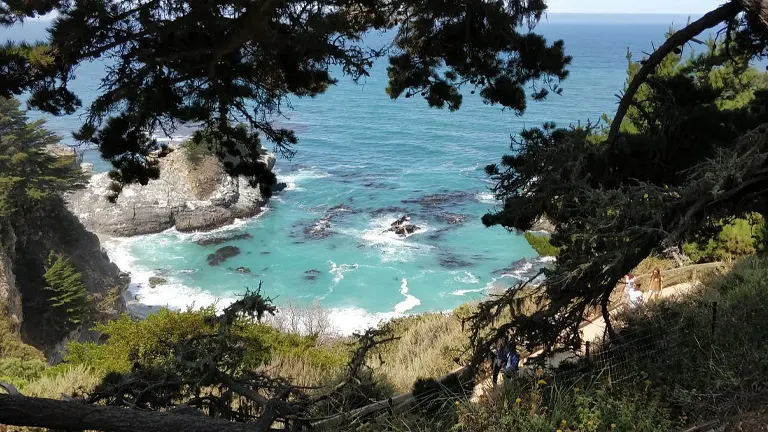
It’s an ideal destination for those seeking a serene escape or an adventurous exploration, with well-maintained trails and breathtaking vistas that promise an unforgettable experience for visitors of all interests.
Characterizing Features of Julia Pfeiffer Burns State Park
- McWay Falls: Perhaps the most iconic feature of the park is McWay Falls, an 80-foot waterfall that plunges directly into the Pacific Ocean. This rare ‘tidefall’ is set against a stunning backdrop of rugged cliffs and lush vegetation, creating a picturesque scene that epitomizes the beauty of the Big Sur coast.
- Ancient Redwoods: The park is a sanctuary for ancient redwood trees, some towering up to 300 feet and aged over 2,500 years. These majestic giants stand as silent witnesses to history, creating a mystical and serene environment that transports visitors back in time. The redwoods are a crucial habitat for various wildlife and are emblematic of California’s diverse natural heritage.
- Saddle Rock Ranch: A key historical site within the park is the Saddle Rock Ranch, previously a part of the large cattle ranch owned by Christopher and Rachel McWay. This area, rich in history, offers a glimpse into the early homesteading life in Big Sur and is a focal point for understanding the region’s past.
- The Partington Cove: Partington Cove is another notable feature, offering a unique coastal experience. A short but steep trail leads to this hidden cove, where a tunnel carved through rock opens up to a rugged and beautiful shoreline. This spot provides an intimate encounter with the raw power and beauty of the Big Sur coast.
- The Overlook Trail: The Overlook Trail is a prime example of the park’s accessible natural beauty. This short trail leads to an awe-inspiring viewpoint of McWay Falls and the ocean beyond. It’s a testament to the park’s commitment to preserving and showcasing its natural wonders while ensuring they are accessible to all visitors.
- The Tin House: A curious feature of the park is the Tin House, a structure originally built from repurposed materials of abandoned gas stations. The house, with its unique history and construction, stands as a symbol of human ingenuity and resourcefulness, adding a layer of cultural history to the park’s natural splendor.
History of Julia Pfeiffer Burns State Park
Named after Julia Pfeiffer Burns, a notable Big Sur pioneer, Julia Pfeiffer Burns State Park embodies her legacy within its stunning landscape. The park’s history dates back to the late 1870s with the McWay family’s homestead. Its transformation began in the early 20th century when Lathrop Brown and his wife Hélène, charmed by the land’s beauty, purchased the nearby Saddle Rock Ranch and befriended Julia Pfeiffer Burns. Their connection played a key role in shaping the park’s destiny.

The Browns built the rustic Waterfall House near McWay Falls, coinciding with the development of the Carmel San Simeon Highway and the area’s first electricity. In 1961, Hélène Hooper Brown donated the land to the state, honoring Julia Pfeiffer Burns, with the intention of creating a public park. Despite the Waterfall House’s eventual demolition in 1965, the park’s inception marked a crucial step in conserving the natural and historical essence of Big Sur.
Unique Ecosystem of Julia Pfeiffer Burns State Park
Julia Pfeiffer Burns State Park boasts a unique ecosystem that is a marvel of natural diversity and ecological richness. Situated on the California coast, it features a rare interplay between marine and terrestrial environments. The park is renowned for its ancient redwood forests, which provide a vital habitat for a myriad of wildlife species. These towering trees, some centuries old, create a distinct microclimate that nurtures a variety of plant and animal life.
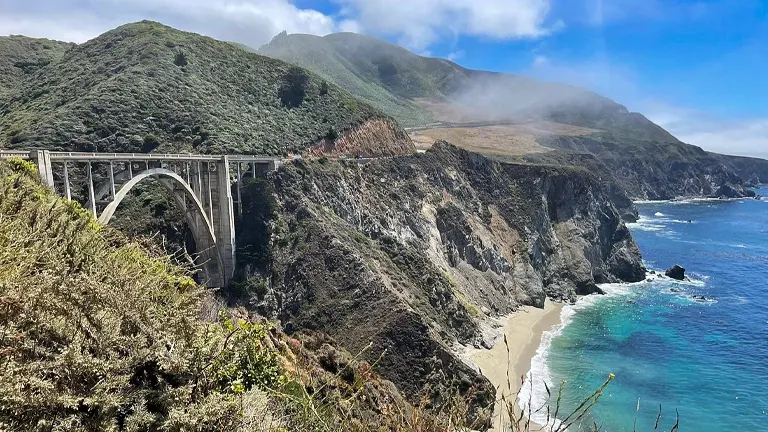
Beneath the canopy, a lush undergrowth thrives, including ferns, wildflowers, and shrubs adapted to the cool, moist conditions. The park’s coastline introduces a marine ecosystem, where the kelp forests and tide pools are teeming with aquatic life. This blend of coastal and forest ecosystems makes Julia Pfeiffer Burns State Park a unique and valuable sanctuary for studying and appreciating biodiversity, offering a window into the ecological harmony that exists between land and sea.
Unique Location of Julia Pfeiffer Burns State Park

Julia Pfeiffer Burns State Park is uniquely located on California’s Central Coast. It’s positioned 12 miles south of Pfeiffer Big Sur State Park, right along the Pacific Ocean. This special spot combines the beauty of the Santa Lucia Mountains with stunning ocean views. The park is known for its diverse landscapes, featuring coastal cliffs, dense forests, and a rich marine environment. The highlight is McWay Falls, which dramatically drops right into the ocean, showcasing the area’s blend of land and sea. This location makes the park a perfect place to enjoy the natural beauty of the Big Sur region.
The Importance of Conservation and Recreation in Julia Pfeiffer Burns State Park
Conservation and recreation play a pivotal role in the essence of Julia Pfeiffer Burns State Park. This park serves as a crucial sanctuary for diverse ecosystems, ranging from ancient redwoods to rich marine habitats, making its preservation vital for maintaining biodiversity. Conservation efforts, like protecting endangered species and restoring native vegetation, ensure the park’s ecological integrity. Simultaneously, the park offers recreational opportunities that foster a deep appreciation for nature among visitors.
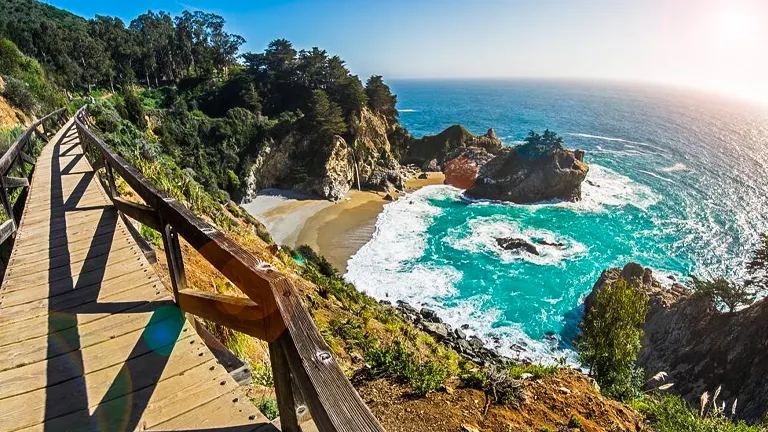
Activities like hiking, camping, and wildlife viewing not only provide enjoyment but also help in educating the public about the importance of environmental stewardship. This dual focus on conservation and recreation underlines the park’s commitment to sustaining its natural splendor for future generations, while allowing people to connect with and enjoy the outdoors responsibly.
Diverse Vegetation and Plant Species in Julia Pfeiffer Burns State Park
- Coast Redwoods (Sequoia sempervirens): These ancient and towering trees are the park’s most iconic feature. Some of the redwoods here are over 2,500 years old, making them a living testament to the area’s rich ecological history. Their immense size and age create a unique microhabitat for other species.
- California Bay Laurel (Umbellularia californica): This evergreen tree is prevalent throughout the park’s understory. Known for its aromatic leaves and small yellow flowers, the California Bay Laurel plays a crucial role in providing shelter and food for various wildlife species.
- Big Leaf Maple (Acer macrophyllum): Recognizable by its large, lobed leaves, the Big Leaf Maple adds a vibrant touch to the park’s landscape, especially in the fall when its foliage turns into brilliant shades of yellow and orange.
- Pacific Madrone (Arbutus menziesii): With its distinctive reddish-brown bark and glossy green leaves, the Pacific Madrone is an integral part of the park’s ecosystem. Its bell-shaped flowers and red berries are vital food sources for birds and mammals.
- Coastal Live Oak (Quercus agrifolia): These resilient oaks are adapted to the coastal environment. Their thick, leathery leaves and gnarled branches are characteristic of the park’s oak woodlands, providing essential habitat and food for local wildlife.
- Ferns (Various Species): The park’s moist and shaded areas are ideal for ferns, including the Western Sword Fern (Polystichum munitum) and the Five-Finger Fern (Adiantum aleuticum). These ferns add to the park’s lush undergrowth and are vital for maintaining soil moisture and stability.
- Wildflowers (Various Species): Seasonally, the park blooms with a variety of wildflowers, including the California Poppy (Eschscholzia californica) and the Purple Owl’s Clover (Castilleja exserta). These vibrant blooms not only add color to the landscape but also support the park’s pollinators.
- Chaparral and Scrub (Various Species): This vegetation type, consisting of dense, evergreen shrubs like the Coyote Brush (Baccharis pilularis) and Manzanita (Arctostaphylos spp.), covers a significant portion of the park. These hardy plants are adapted to dry, rocky soils and play a key role in preventing soil erosion.
- Riparian Vegetation (Various Species): Along the park’s streams and wet areas, species like the Willow (Salix spp.) and the California Sycamore (Platanus racemosa) thrive. These plants are crucial for stabilizing streambanks and providing habitat for aquatic and semi-aquatic species.
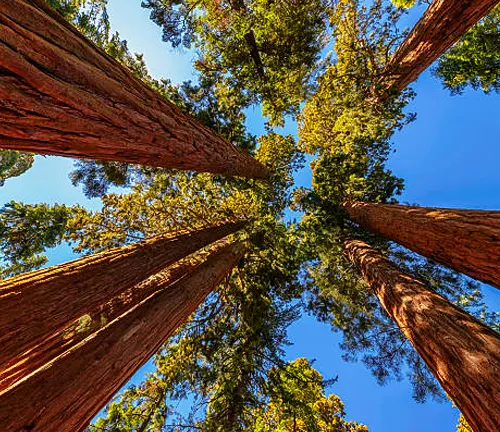
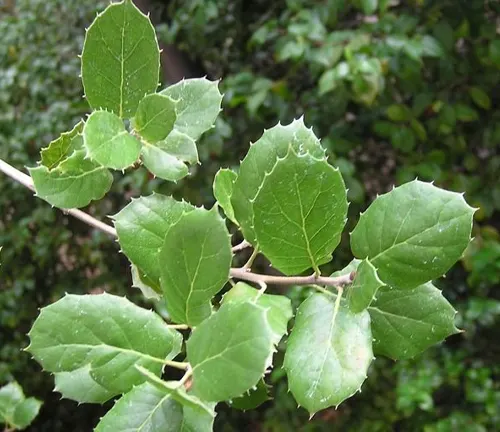
Fauna in Julia Pfeiffer Burns State Park
- California Condor (Gymnogyps californianus): These majestic birds, once on the brink of extinction, are a conservation success story. Soaring high above the park, they are among the largest flying birds in North America and play a vital role in the ecosystem as scavengers.
- Gray Whales (Eschrichtius robustus): A spectacular sight during their migration seasons (December to May), Gray Whales can often be seen off the park’s coastline. They are a major attraction for wildlife enthusiasts and represent the park’s rich marine biodiversity.
- Black-Tailed Deer (Odocoileus hemionus columbianus): Commonly spotted in the park, these deer are an integral part of the ecosystem, influencing the growth and regeneration of plant species through their foraging habits.
- Banana Slug (Ariolimax spp.): These slow-moving, bright yellow slugs are a unique and important part of the park’s ecosystem. As decomposers, they play a crucial role in breaking down dead organic matter and recycling nutrients back into the soil.
- Bobcat (Lynx rufus): Although more elusive, bobcats are an essential top predator in the park. They help maintain a healthy balance in the ecosystem by controlling the population of smaller mammals and rodents.
- Monarch Butterfly (Danaus plexippus): These well-known butterflies are famous for their long migrations. The park provides a critical habitat for them, especially during their winter migration.
- California Sea Lion (Zalophus californianus): Often seen lounging on coastal rocks or heard barking, these sea lions are a key marine species. They contribute to the park’s marine ecosystem and are a delight for visitors to observe.
- Western Fence Lizard (Sceloporus occidentalis): Commonly found in the park, these lizards are an important part of the food web. They serve as prey for larger animals and help control insect populations.
- Peregrine Falcon (Falco peregrinus): Known for being one of the fastest birds, peregrine falcons are impressive hunters and an exciting sight for birdwatchers. Their presence indicates a healthy ecosystem, as they are top avian predators.
- Sea Otter (Enhydra lutris): While not as commonly seen within the park boundaries, sea otters are an iconic species of the nearby Big Sur coastline. These playful mammals are crucial for maintaining kelp forest ecosystems and are a symbol of marine conservation efforts.

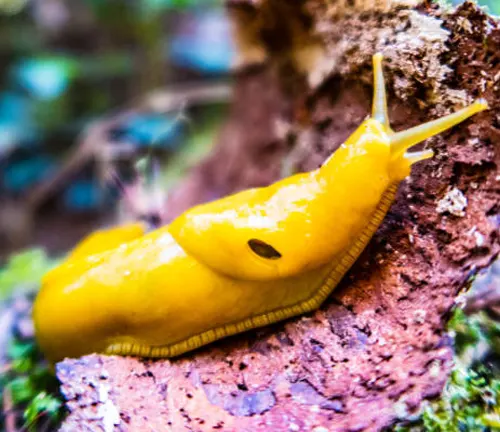
Different Attractions in Julia Pfeiffer Burns State Park
McWay Falls: McWay Falls is an extraordinary 80-foot waterfall, known for its rare feature of cascading directly into the Pacific Ocean. This breathtaking spectacle is visible from the Overlook Trail and is one of the most photographed scenes in Big Sur. The falls offer a unique natural display, combining the serene beauty of water with the ruggedness of the coastal cliffs.
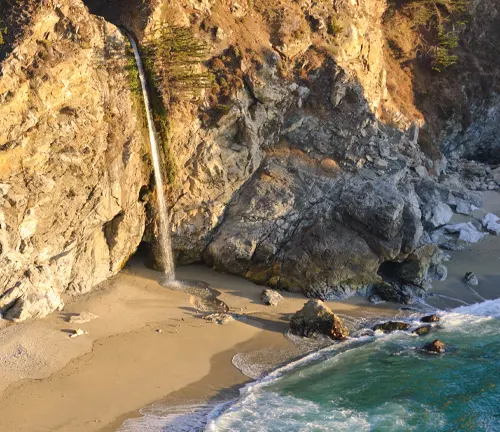

The Overlook Trail: The Overlook Trail is a short, accessible path leading to a viewing platform for McWay Falls. This trail is not just an easy walk for all ages, but it also provides a panoramic view of the coastline and the falls, making it a perfect spot for both relaxation and photography.
Partington Cove: A hidden gem in the park, Partington Cove can be reached through a steep but rewarding trail. This secluded cove features a tunnel leading to a rocky beach and stunning views of the ocean, offering a peaceful retreat away from the more crowded areas of the park.
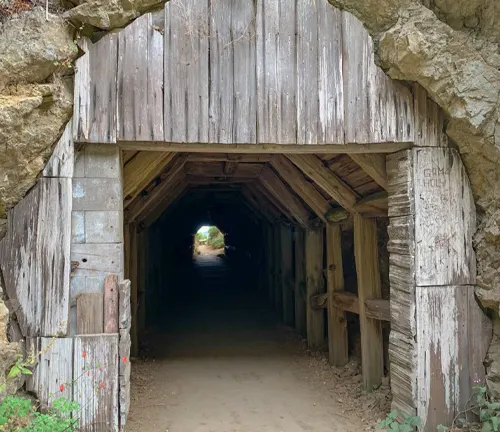

The Ewoldsen Trail: For those seeking a more adventurous experience, the Ewoldsen Trail winds through redwood groves, offering glimpses of the Big Sur River and diverse local flora. This trail is ideal for hikers looking to immerse themselves in the park’s lush greenery and serene woodland ambiance.
The Tin House: The Tin House, an unusual historical structure built from repurposed materials of gas stations, stands as a testament to human ingenuity. Though mostly a ruin today, it offers a fascinating glimpse into the park’s past and provides a unique hiking destination with stunning views of the surrounding landscape.
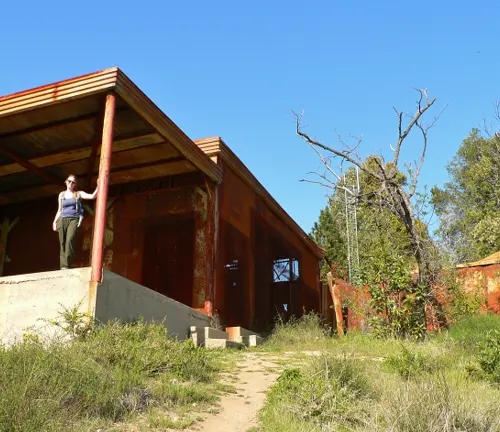
Recreational Activities in Julia Pfeiffer Burns State Park
- Hiking: Hiking is perhaps the most popular activity in the park, with trails like the Overlook Trail offering breathtaking views of McWay Falls and the Ewoldsen Trail winding through redwood forests. These trails vary in difficulty, providing options for both casual walkers and serious hikers, allowing everyone to enjoy the stunning natural scenery of Big Sur.
- Wildlife Watching: The park’s diverse ecosystems make it an ideal spot for wildlife watching. Visitors can spot California condors soaring in the sky, gray whales during their migration seasons, and a variety of other wildlife in their natural habitats. The park’s blend of marine and terrestrial environments creates unique opportunities for observing a wide range of species.
- Photography: With its scenic vistas and unique natural features, the park is a paradise for photographers. From the iconic McWay Falls to the dense redwood forests and rugged coastline, there are endless opportunities to capture the stunning beauty of Big Sur.
- Picnicking: The park offers several serene spots perfect for picnicking. Visitors can enjoy a meal surrounded by the park’s natural beauty, making for a relaxing and rejuvenating experience.
- Stargazing: Away from city lights, Julia Pfeiffer Burns State Park becomes a wonderful location for stargazing. On clear nights, the dark skies reveal spectacular views of the stars, planets, and the Milky Way, providing a peaceful and awe-inspiring experience.
- Scuba Diving: For the adventurous, the Julia Pfeiffer Burns Underwater Area offers a unique scuba diving experience. Divers can explore kelp forests and marine life, adding an underwater perspective to their visit.
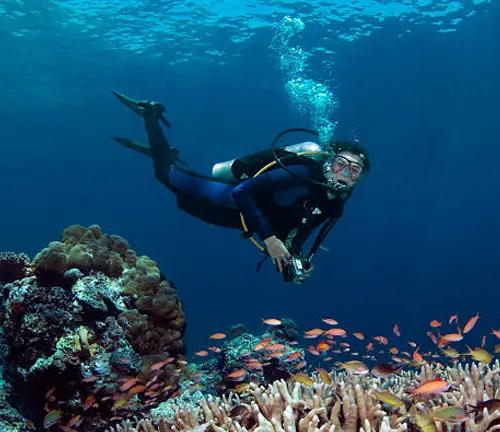
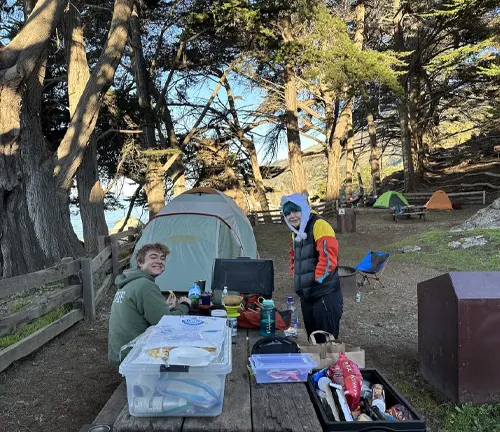
Different Facilities and Amenities in Julia Pfeiffer Burns State Park
- Parking Areas: The park provides designated parking areas near major attractions, including close to McWay Falls. These parking facilities are convenient for visitors looking to explore key spots within the park, though there’s a nominal fee. For those looking to avoid this fee, parking along Highway 1 and walking into the park is a popular alternative.
- Picnic Areas: Scattered throughout the park are several picnic areas, offering visitors the chance to enjoy a meal amidst the stunning natural scenery. These areas are strategically placed to provide serene settings, making them perfect spots for families and groups to relax and refuel during their visit.
- Visitor Center: The Visitor Center is an invaluable resource for guests. It offers a range of information, from the park’s history to details about its flora and fauna. The center also provides educational exhibits and sometimes hosts interpretive programs, enhancing the understanding and appreciation of the park’s unique ecosystem.
- Restrooms and Basic Amenities: Essential amenities like restrooms are available at key points in the park. These facilities are maintained to ensure cleanliness and accessibility, making it convenient for visitors spending extended time exploring the park.
- Camping Sites: For those looking to immerse themselves in the park’s natural environment, Julia Pfeiffer Burns State Park offers environmental hike-in camping areas. These sites are limited and require reservations, providing an intimate and minimal-impact camping experience with exceptional views of the Pacific Coast.
- Trail Markers and Information Boards: The park features well-marked trails and informative boards at various points. These resources are designed to guide visitors safely through the park while providing educational insights about the specific areas, trails, and features they are exploring.
Tips and Advice for Visiting Julia Pfeiffer Burns State Park
- Plan Parking Strategically: Consider parking along Highway 1 to avoid parking fees near major attractions like McWay Falls. The park’s parking areas are convenient but often have a fee. Parking along the highway and walking into the park can be a budget-friendly option, but remember to park safely and respect traffic laws.
- Check Trail Conditions Beforehand: Visit the park’s official website or contact the visitor center for the latest trail information. Some trails may be closed due to weather or maintenance, so it’s important to have updated information for a safe and enjoyable hiking experience.
- Respect Wildlife and Natural Surroundings: Keep a safe distance from wildlife and avoid disturbing their natural habitats. Stick to marked trails to preserve the park’s delicate ecosystems. Remember, you’re a guest in their home, so treat the environment with care and respect.
- Pack Appropriately for the Weather: The weather can be unpredictable, so dress in layers and bring rain gear, even in summer. Fog can roll in quickly along the coast, and temperatures can vary between the beach and higher elevations.
- Stay Hydrated and Bring Snacks: There are limited facilities for food and water in the park, so bring enough water and snacks, especially if you plan to hike or spend the whole day exploring.
- Capture Memories but Leave No Trace: Photography is encouraged, but remember to leave no trace. Take only photos, leave only footprints. This means packing out all your trash and not removing any natural objects or disturbing the landscape.
- Visit During Off-Peak Hours for a Quieter Experience: The park can get crowded, especially during weekends and holidays. For a more peaceful visit, try to come early in the morning or on weekdays.
- Be Prepared for No Cell Service: Cell service in the park can be spotty or non-existent. Plan accordingly, and don’t rely on your phone for directions or emergencies.
Recommendation
If you’re seeking a blend of breathtaking natural beauty and serene wilderness, Julia Pfeiffer Burns State Park is a must-visit destination. Nestled along California’s majestic coastline, this park offers something for everyone. From the awe-inspiring McWay Falls that cascade directly into the Pacific Ocean to the towering ancient redwoods, each step in this park is a journey through natural wonder. Whether you’re an avid hiker, a photography enthusiast, or simply in need of a peaceful escape from the hustle of daily life, this park provides an unparalleled experience. Its well-maintained trails, diverse wildlife, and stunning vistas are a true testament to the beauty of the Big Sur region. Don’t miss the chance to immerse yourself in this remarkable natural sanctuary – it’s an experience that will leave you inspired and rejuvenated.
Conclusion
In summary, Julia Pfeiffer Burns State Park is a testament to the stunning beauty and rich history of Big Sur. With attractions like McWay Falls and its ancient redwoods, the park is more than a scenic spot; it’s a gateway to nature’s wonders and a storied past. Visitors are touched not just by its picturesque landscapes but also by the harmonious blend of conservation and recreation. This park is not only a retreat for wildlife but also a sanctuary for the human soul, epitomizing the true spirit of nature’s majesty and preservation.
FAQs
- What is Julia Pfeiffer Burns State Park best known for?
The park is most famous for McWay Falls, an 80-foot waterfall that flows directly into the Pacific Ocean. It’s also renowned for its ancient redwood forests and stunning coastal views. - Can I swim at McWay Falls?
No, swimming is not allowed at McWay Falls. The beach area is closed to the public to protect the environment and ensure visitor safety. - Are there camping facilities in the park?
Yes, the park offers environmental hike-in camping. These sites are limited and require reservations, providing a unique, low-impact camping experience. - Is Julia Pfeiffer Burns State Park dog-friendly?
Dogs are not allowed on the trails or backcountry areas of the park to protect wildlife and habitat. However, they are allowed in the parking and picnic areas if kept on a leash. - What types of wildlife might I see in the park?
Visitors might see a variety of wildlife, including California condors, gray whales (during migration seasons), black-tailed deer, and numerous bird species. - Are there guided tours available in the park?
The park does not regularly offer guided tours, but the visitor center provides extensive information and occasional interpretive programs. - What should I bring for a day visit to the park?
It’s recommended to bring water, snacks, suitable footwear for hiking, sun protection, and possibly a camera. Also, dress in layers as the weather can change quickly. - How accessible are the park’s trails and facilities?
Some trails and facilities are designed to be accessible, but given the park’s natural terrain, not all areas are easily accessible. It’s best to check current conditions and accessibility options at the visitor center upon arrival.
As we leave Julia Pfeiffer Burns State Park, we carry with us lasting impressions of its natural splendor. From the cascading McWay Falls to the towering redwoods, this park is a testament to the beauty and resilience of the natural world. It’s a place that not only captivates the eyes but also enriches the soul, reminding us of the joy and tranquility nature offers.


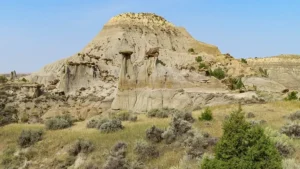
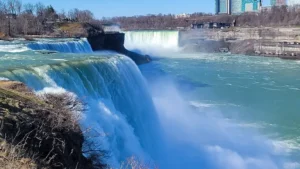
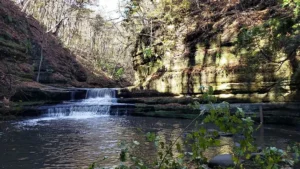
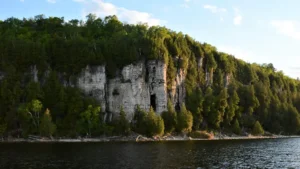
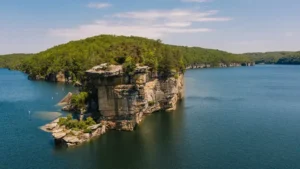

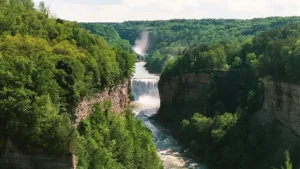
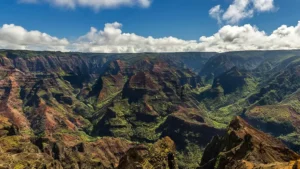
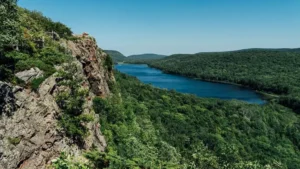
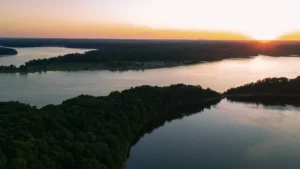


Leave your comment